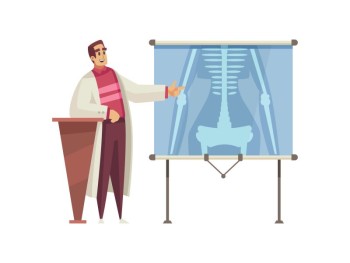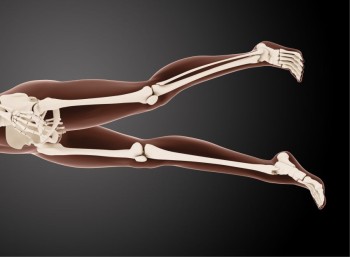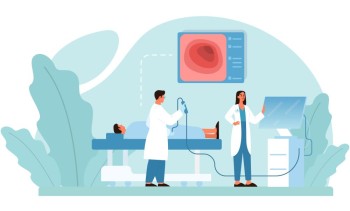
Forearm X-rays play a crucial role in diagnosing various orthopedic conditions, providing detailed insights through Anteroposterior (AP) and lateral views.
Forearm X-ray in India with Cost
Forearm X-ray: Decoding the AP & Lateral Views
in Detail
Forearm X-rays play a crucial role in diagnosing various orthopedic conditions, providing detailed insights through Anteroposterior (AP) and lateral views. Understanding the nuances of this imaging technique is essential for both healthcare professionals and patients.
Introduction
Forearm X-rays are a fundamental diagnostic tool used to assess bone health and detect abnormalities in the forearm region. Whether investigating a potential fracture, dislocation, or other orthopedic concerns, the AP and lateral views provide valuable information for accurate diagnosis and treatment planning.
Purpose of Forearm X-ray
The primary purpose of a forearm X-ray is to visualize the bones and surrounding structures in the forearm area. It aids in identifying fractures, assessing joint health, and evaluating bone density. The detailed images obtained through this procedure are instrumental in guiding healthcare professionals toward an effective treatment strategy.
Procedure of Forearm
X-ray
The procedure involves capturing two main views: the Anteroposterior (AP) view and the lateral view. These views offer distinct perspectives, allowing for a comprehensive examination of the forearm's skeletal structure.
Preparation for the X-ray
Before undergoing a forearm X-ray, patients are required to remove any jewelry or metal objects that may interfere with the imaging. The radiologic technologist will position the arm appropriately to obtain clear and accurate images.
Signs and Symptoms Leading to Forearm X-ray
Doctors may recommend a forearm X-ray based on various signs and symptoms, including localized pain, swelling, or limited range of motion. Understanding the patient's medical history and symptoms is crucial in determining the necessity of this diagnostic procedure.
Understanding AP View
The Anteroposterior (AP) view provides a frontal look at the forearm, allowing for the assessment of the bones' alignment and integrity. This view is particularly useful in detecting fractures, dislocations, and abnormalities in the forearm's anterior-posterior plane.
Analyzing Lateral View
In the lateral view, the X-ray beam penetrates from the side, offering a profile image of the forearm. This view aids in identifying fractures or abnormalities that may not be as visible in the AP view. Together, these two perspectives provide a comprehensive understanding of the forearm's condition.
Conditions Detected by Forearm X-ray
Forearm X-rays are effective in diagnosing a range of conditions, including fractures of the radius and ulna, dislocations, and signs of bone diseases such as osteoporosis. The detailed images help healthcare professionals formulate accurate diagnoses and treatment plans.
Comparison with Other Imaging Techniques
While forearm X-rays are valuable, they may be complemented by other imaging techniques such as MRI or CT scans, especially when a more detailed evaluation is required. Each imaging method has its strengths, and the choice depends on the specific diagnostic needs.
Importance in Orthopedics
In orthopedics, forearm X-rays are a standard tool for evaluating injuries and conditions affecting the forearm bones. Orthopedic specialists rely on these images to make informed decisions regarding surgical interventions, casting, or other forms of treatment.
Limitations and Considerations
It's essential to acknowledge the limitations of forearm X-rays, including potential challenges in visualizing soft tissues. In cases where a more detailed examination is needed, additional imaging modalities may be recommended.
What to Expect During the Procedure
During the procedure, patients will be positioned by a radiologic technologist, and X-ray images will be taken. The process is quick and relatively painless, with minimal exposure to radiation. Patients may be required to remain still for a short duration to ensure clear images.
Interpreting X-ray Results
Healthcare professionals, often radiologists or orthopedic specialists, interpret the X-ray results. They analyze the images for signs of fractures, dislocations, or other abnormalities. The findings guide the formulation of an accurate diagnosis and an appropriate treatment plan.
Safety Measures During Forearm X-ray
Radiation exposure during a forearm X-ray is minimal, and the benefits of obtaining critical diagnostic information outweigh the risks. Pregnant individuals or those with concerns about radiation exposure should communicate with their healthcare provider before the procedure to discuss necessary precautions.
Conclusion
In conclusion, forearm X-rays, particularly the AP and lateral views, provide invaluable insights into the skeletal health of the forearm. These images aid healthcare professionals in accurately diagnosing and treating a range of orthopedic conditions, ensuring optimal patient care.
Frequently Asked Questions (FAQs)
1. How long does a forearm X-ray procedure take?
The forearm X-ray procedure is relatively quick, typically taking around 15 to 30 minutes. However, the exact duration may vary based on factors such as the patient's cooperation and the complexity of the case.
2. Is there any preparation required before a forearm X-ray?
Yes, some preparations are necessary. Patients are usually required to remove jewelry and any metal objects from the forearm area. The radiologic technologist will provide specific instructions before the procedure.
3. Are there any risks associated with forearm X-rays?
Forearm X-rays involve minimal radiation exposure, and the benefits of obtaining crucial diagnostic information generally outweigh the risks. Pregnant individuals or those with concerns about radiation should discuss them with their healthcare provider beforehand.
4. Can children undergo forearm X-rays?
Yes, forearm X-rays are commonly performed on children when necessary. The procedure is safe, and the radiation exposure is kept to a minimum. The radiologic technologist will take necessary precautions to ensure the child's safety.
5. How soon can I expect the results of a forearm X-ray?
The results of a forearm X-ray are usually available shortly after the procedure. Your healthcare provider, often a radiologist or orthopedic specialist, will interpret the images and discuss the findings with you during a follow-up appointment.
These FAQs aim to provide additional information and address common concerns related to forearm X-rays. If you have specific questions or concerns regarding your individual case, it's advisable to consult with your healthcare provider for personalized guidance.
(0)
Login to continue



